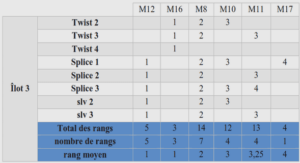FUNDAMENTALS OF AGRONOMY
Concept of land, soil and soil science. Composition of earth crust and its relationship with soils. Rocks and minerals. Weathering. Soil forming factors and processes. Soil profile. Soil colour. Elementary knowledge of taxonomic classification of soils. Soil and soil components. Physical properties of soil, soils of Punjab and India. Soil texture– textural classes. Soil structure– classification, soil aggregation and significance, soil consistency, soil crusting, bulk density and particle density of soils and porosity, their significance and manipulation. Section B Soil colloids– properties, nature, types and significance. Sources of charges in clay minerals. Soil microorganisms. Soil and water pollution. Soil organic matter–decomposition, mineralization and humus. Soil reactions acidic, saline, alkaline and alkali soil and their reclamation. Soil testing for recommendation purpose. Ion exchange, CEC, AEC – factors affecting and adsorption of ions. Carbon cycle, C: N ratio. Soil organisms and their beneficial and harmful roles.Mensuration: Mensuration of rectangles, easy examples of garden paths, cost of planting trees and fencing gardens. Area of right angled triangles area and height of isosceles and equilateral triangles, area of triangles in terms of sides, rent of field. Area of parallelograms, rhombus, quadrilateral and trapenoid. Regular polygons with emphasis on hexagon and octagon.
Simple cases of similar figures. Circumference and area of circles. Circular rings. Cost of fencing circular fields and paths. 2) Mensuration: Volumes of cubes and rectangular solids. Cubic contents of tanks and cisterns. Volumes of triangular and rectangular prisms, right circular cylinders and segments of cylinders. (N. B. Easy numerical examples bearing on Science of agriculture only to be set. Proofs of formulae not required.) 3) Algebra: Solution of quadratic equations and of those reducible to quadratic equation. (One variable). Theory of quadratic equations. Relation between roots and co-efficients.Algebra: Series: nth terms sum to n terms of an A. P. and G. P. nth term of an H. P. (excluding means and problems on numbers). Permutation and combinations: simple problems only. (Proofs of formulae not required). Binomial theorem, statement for any index: Expansion particular term coefficient of n, summation of simple infinite series evaluation cube root etc. correct to a certain place of decimal.Reduction of equation ax+by+c=0: to (a) slope x cos Ɵ+y sin Ɵ= p (b) intercept form (c) perpendicular form (only method of reduction and not proof); point of intersection and, concurrence, Angle of intersection of lines y=m x+c, Y=m2x+c2, and equations of line (a) parallel and (b)2 perpendicular to a given line and passing through a given point. (3) The circle- equation when (i) centre and radius given. (ii) Passes through three points (iii) extremities of a diameter given; the equation x2+y2+2qx+2cy+c=0 represents circle, center and radius, equations of the tangents and normal at any point of circle (only use formula no proof).
Trigonometry: Sexagensimal, centesimal and circular measure of an angle. Definitions of T-ratio’s and the relations connecting them. T-ratio’s of 0, 6, 45, 60, 90 (no proofs). Evaluation of T-ratio’s of allied angles and 2A, 3A (no proofs) and easy identities based on them and identities based on the formulae for sin P + sin Q and cos P – cos Q and their converse conditional identities, relations between the sides and the angles of a triangle i.e. sine cosine, and projections formulae, logarithm and their applications (based on the use of tables only) to simplification of fractions solution of right angled triangles. Solution of oblique angled triangles when (i) three sides are given (ii) two angles and a side are given (iii) two sides and an angle are given, graphs of sin x and cos x and reading from graphs.Theorems on differentiation of the sum, difference, the product & the quotient of functions. The further differentiation of a simple function of function, differentiation of parametric functions and of one function with regard to another function (use of transermation excluded).The question paper will consist of three sections A, B and C. Section A and B will have four questions from the respective sections of the syllabus and will carry 9 marks each. Section C will consist of 9 short-answer type questions of 1 mark each which will cover the entire syllabus uniformly and will carry 9 marks in all.Introduction to Zoology, characteristics of living organisms. Elementary knowledge of typical cell, distinction between animal and plant cells, mitotic and meiotic division in cells, Elementary knowledge of animal tissues. DNA, RNA structure. Zoological nomenclature and principles of classification. General survey of animal kingdom upto Phylum in Invertebrates and upto Classes in Vertebrates with habits, and economic significance of important examples. Amoeba, Entamoeba, Sycon, Plasmodium, Fasciola, Tapeworm, Ascaris, Hirudina, Pharetima, Grasshopper, Locust, Silkworm, Beetle, Red Cotton, Honey Bee, Bug, Mosquito, House fly, Unio, Catla, Rohu, Frog, Owl, Snake, Egret, Woodpecker, Hoope, Parrot, Goat, Horse, Sheep, Rat, Rabbit, (Same specimens included in practical for general survey).



